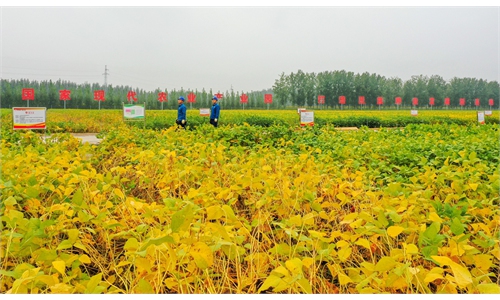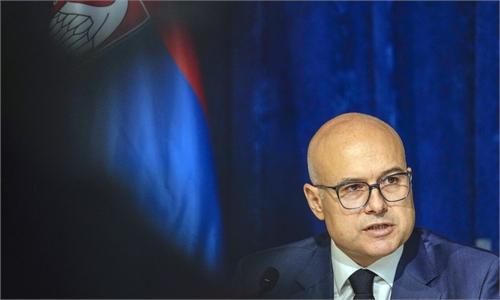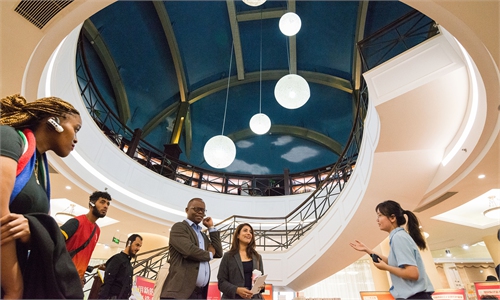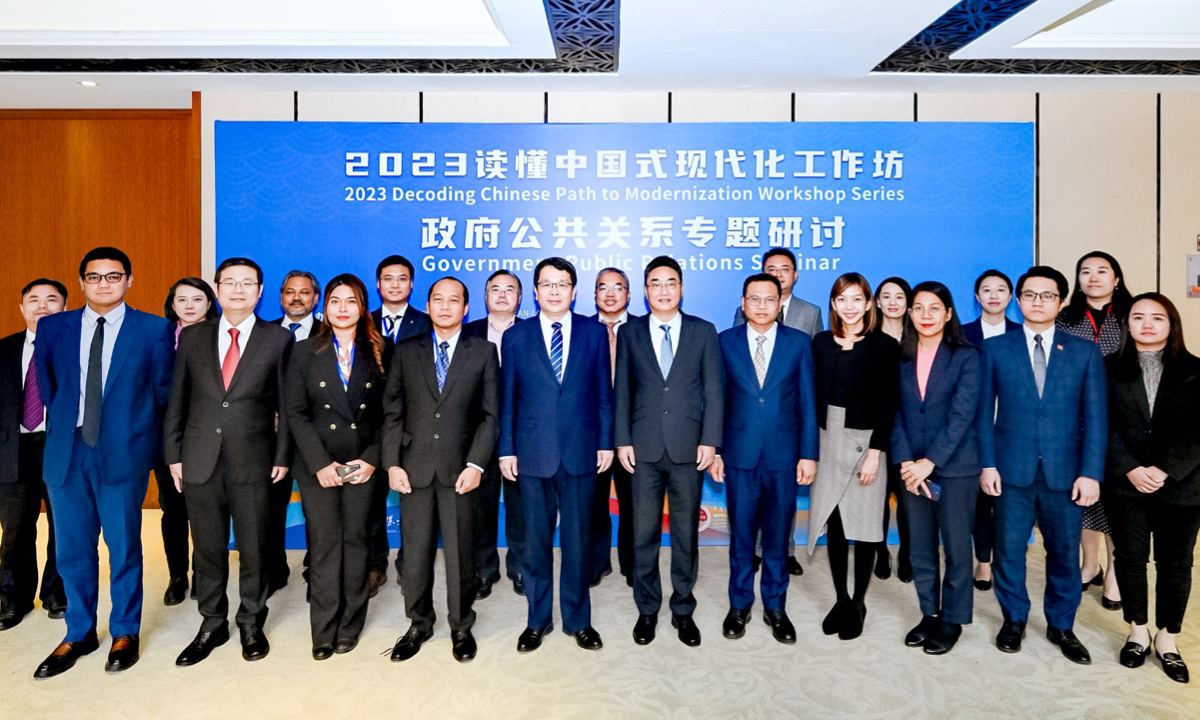
Photo: Courtesy of School of Government and Public Affairs, Communication University of China
What is China's experience in Chinese modernization and how can this be promoted for the modernization of Association of Southeast Asian Nations (ASEAN) member states? Chinese experts, officials and ASEAN member state diplomats discussed these topics at a seminar as part of the Decoding Chinese Path to Modernization Workshop Series organized by the School of Government and Public Affairs at the Communication University of China (CUC) in Beijing on Wednesday.
Chinese-style modernization is not only a topic of concern for the domestic public in China, but also a focus of global media coverage and an experience that many developing countries hope to learn from, Zhang Shuting, president of the CUC, told the forum.
Through today's thematic seminar and field research in Quzhou, a window can be opened for ASEAN member states to gain a deeper understanding of China, and the cultural, historical, social, and political values that China embodies in its continuous development and progress. "We hope to build a bond of cultural exchange and international cooperation, and enhance the foundations of mutual understanding and trust by further deepening exchanges in various fields," Zhang noted.
Some of the attendants at the Wednesday seminar will attend a three-day field research activity in Quzhou, East China's Zhejiang Province to learn how the city promotes cultural revival during the process of urban renewal, the Global Times learned.
Secretary-General of the ASEAN-China Center (ACC) Shi Zhongjun also attended the seminar. "China and ASEAN are connected by mountains and rivers. We share cultural affinity and our interests have become increasingly intertwined. ASEAN-China relations are becoming even more mature and are among the most dynamic, substantive and mutually beneficial partnerships. This has made significant contributions to the peace, stability, and prosperous development of the Asia-Pacific region," he said.
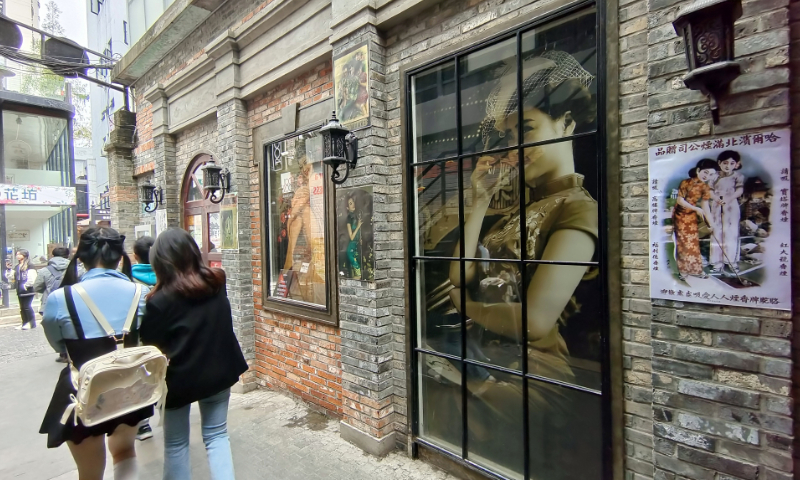
Tourists visit Tianzifang in Shanghai on April 5, 2023. Photo: VCG
At the seminar, Liu Xinxin, an associate professor from the CUC School of Government and Public Affairs, introduced three typical examples of successful urban renewal in China: the Liangma River in Beijing, the Tianzifang arts and crafts area in Shanghai and Quzhou in Zhejiang.
Under the backdrop of modernization, the development and renewal of Chinese cities have brought about complex and challenging new situations. Examples such as the integration of creative and cultural industries in Liangma River and Tianzifang, as well as the urban branding in Quzhou, clearly demonstrate that Chinese cities are actively exploring innovative modernization, Liu said.
These cases vividly illustrate that urbanization and modernization in China not only aim to promote material changes in cities, but also deeper social transformation, including cultural and environmental transitions. This must have Chinese characteristics, she noted.
Duan Yi, deputy director of the Exchange Department at the Center for Language Education and Cooperation under the Chinese Ministry of Education, shared some of his experiences from when he served as deputy county chief in Shangyou county in East China's Jiangxi Province.
Chinese modernization is aimed at achieving common prosperity, including progress in material, cultural, and moral aspects, as well as harmony between humans and nature. The last but not least point is peaceful development, Duan noted.
“So what is a Chinese path to modernization or Chinese modernization?” Bi Jianlu, producer from the China Global Television Network, made a comparison between Chinese and Western paths to modernization at the seminar.
Chinese modernization includes China's traditional values and culture, incorporating them into the process of social development. It emphasizes people-oriented development, the prosperity of all citizens, the simultaneous development of cultural and spiritual civilization with material civilization, harmony between human and nature, as well as peaceful development. All of these are different from the Western path, which is characterized by economic contradictions, purely materialistic interests, environmental and ecological crises, and capital-driven development. These differences are the biggest distinctions between Chinese and Western modernization, according to Bi.
Chinese-style modernization is not the imperialistic exploitation and oppression of the past. Its characteristics lie in inclusive and interconnected infrastructure development. China is also striving to build a modernization model that promotes mutual benefit and win-win cooperation globally, Bi said.
Diplomats from ASEAN member state embassies in China discussed how they could learn from China's successful experiences.
"In 2015, I came to Beijing as a member of a delegation. Now, I am working in China and able to witness the changes happening here. For example, in Sanlitun, I see constant and rapid changes every day. As a citizen of one of the ASEAN member states, I am very pleased to see these developments," First Secretary from the Embassy of Myanmar in China Seint Shwe Zin said at the seminar.
The CUC is one of China's key universities. The university has established cooperative and communication partnership with more than 200 domestic and overseas universities, research and media institutes.
Next year marks the 70th anniversary of the establishment of the CUC and it will also be the ASEAN-China Year of People-to-people Exchanges. "We organized this workshop series as we hope that we can take this opportunity to open a window, build a bond, and create a platform in order to contribute to the construction of a China-ASEAN community with a shared future," Zhou Ting, dean of the CUC School of Government and Public Affairs, said at the seminar.
